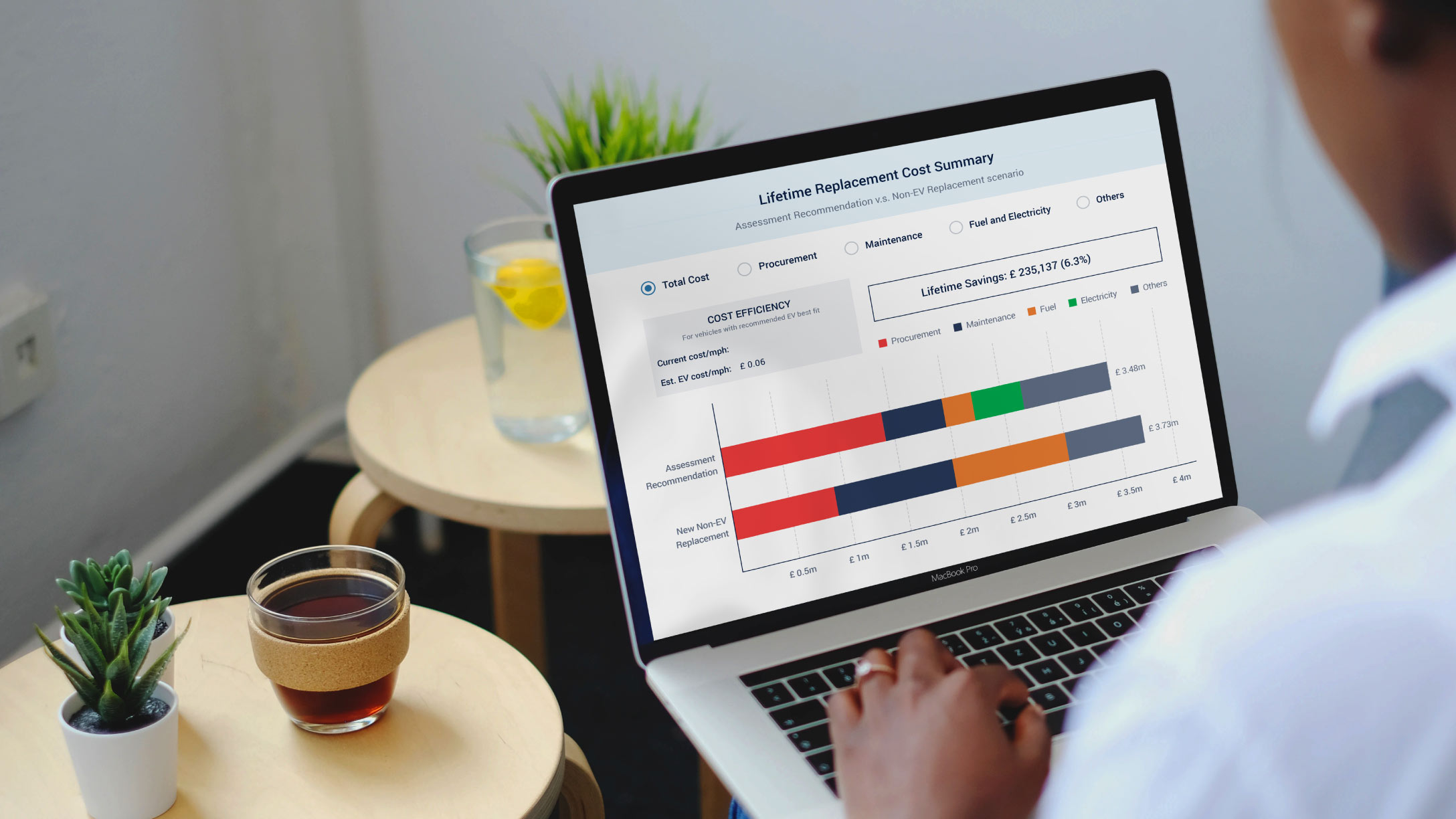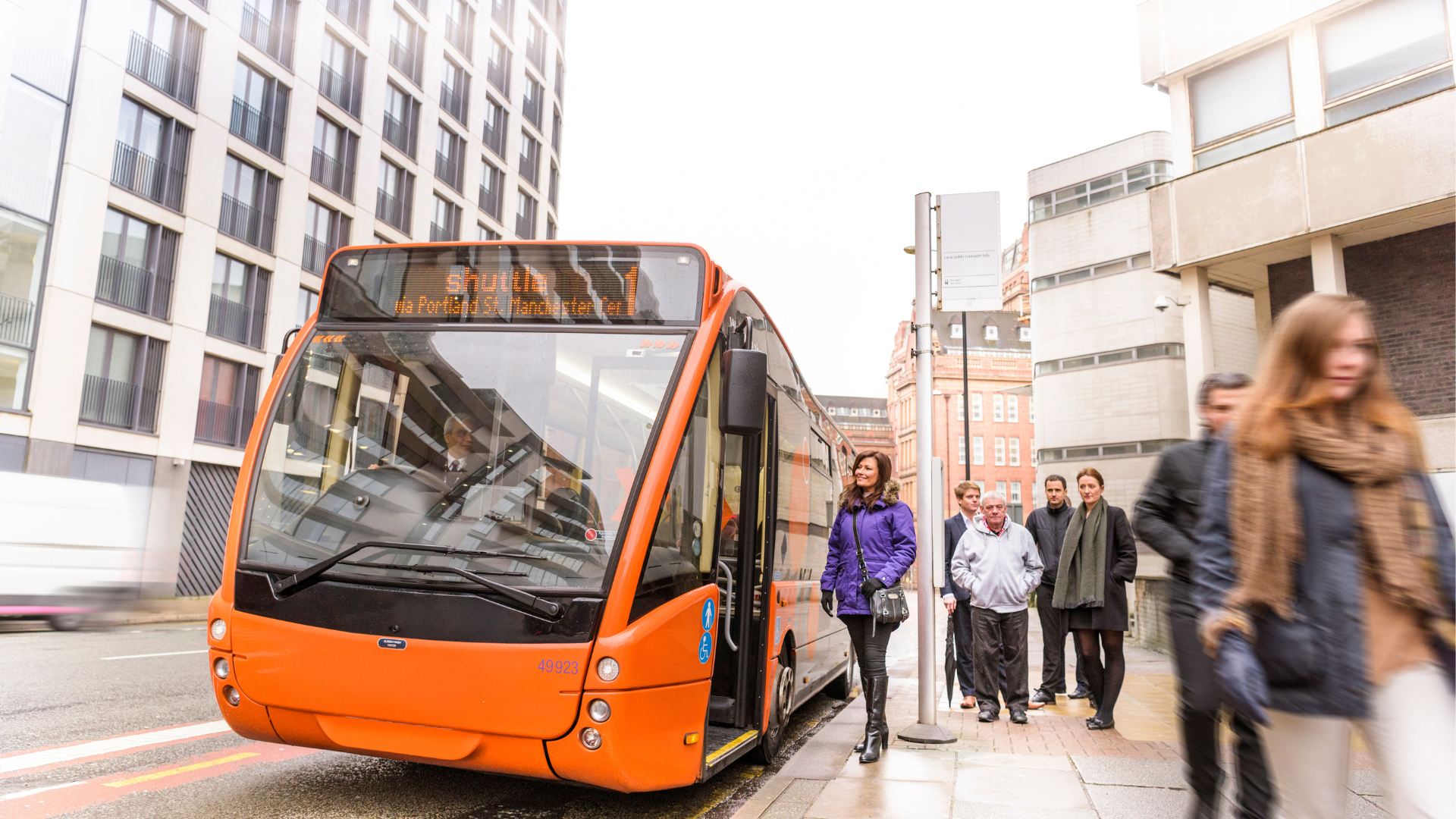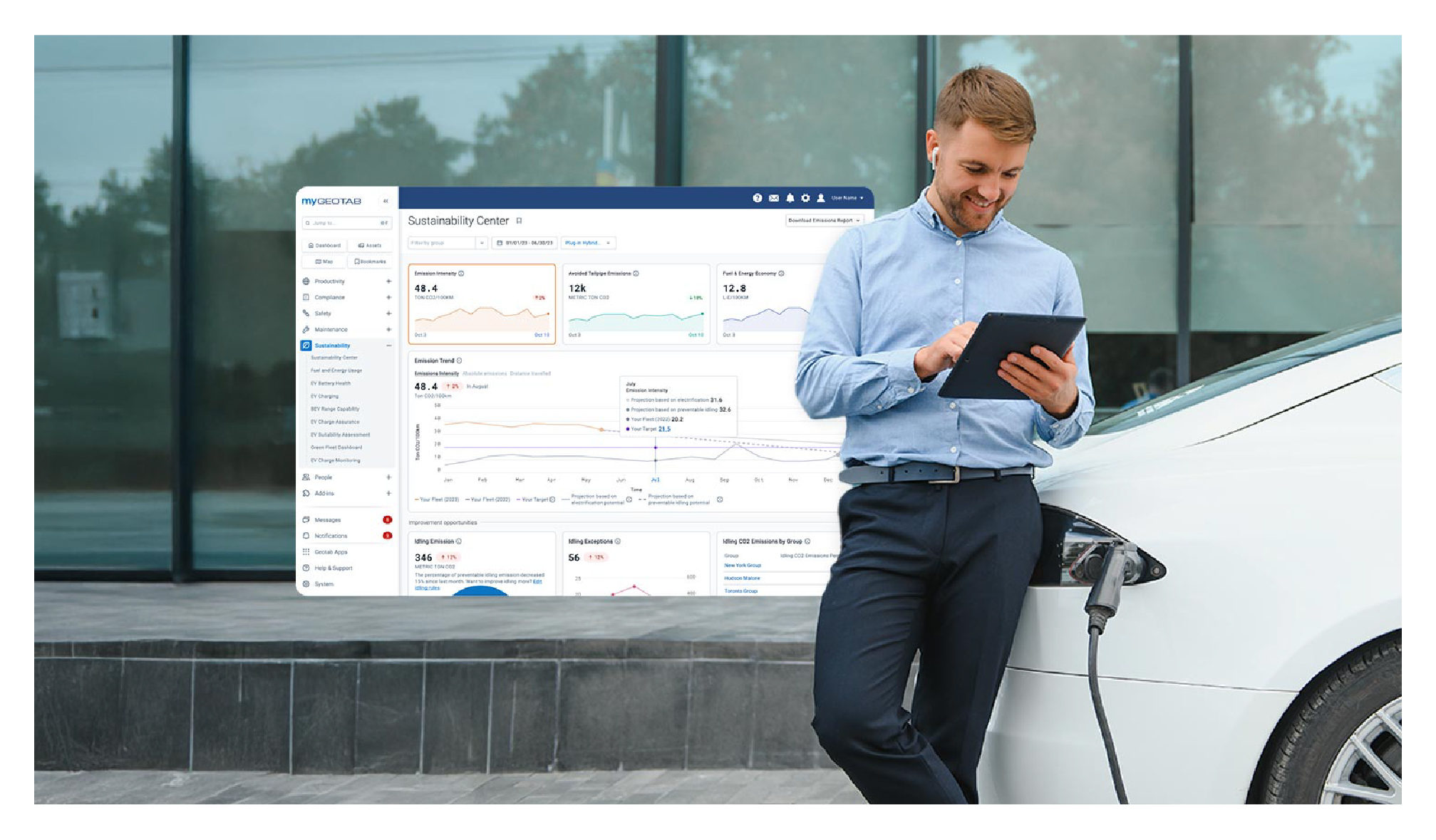The EV Journey Blog Series - Part 3: GO electric
Once the foundations for reducing operational inefficiencies responsible for excessive CO2 emissions have been laid, the next step is to start shifting the fleet away from internal combustion engine (ICE) vehicles, and towards electric vehicles (EVs).
By Geotab Team
Jan 4, 2023

Transitioning to electric gives the potential to massively reduce the carbon footprint of your operations and reduce roadside emissions of air pollutants. Where battery electric vehicles are utilised rather than hybrids, then roadside emissions are eliminated entirely.
This article looks at the initial steps to ensure a successful transition to running a fleet of electric vehicles.
Know your numbers
Before making any purchasing decisions, you need to know that the current vehicle’s driving patterns are suitable for an EV, and if so, which one would be the best fit.
Geotab’s Electric Vehicle Suitability Assessment (EVSA) provides the data you need to make an informed decision. Geotab has compiled a comprehensive database from the extensive list of EVs we have data on. We have then added public data, overlaying our insights on payloads and environmental conditions, and how these factors affect real-world vehicle range.
The EVSA takes an assessment of your current vehicles, their dwell times, utilisation patterns and costs, and then provides a list of zero emission EVs that would meet each vehicle’s usage requirements.
Looking beyond the averages, the EVSA also analyses the most challenging requirements of your fleet vehicles; the longest journeys that they will be expected to achieve over the course of a month or year. In these instances, it will assess whether there is available time for drivers to use public charging infrastructure to get the necessary power to complete the route. This in-depth data is imperative to help you choose an EV that you can have complete confidence in.
Apply a human filter
No matter the real-world range that an EV should be able to achieve, you always need to apply a human filter to understand how that vehicle can be successfully integrated into a fleet.
A vehicle that carries out its peak mileage during the winter months, operating with peak payloads and driving on undulating roads will not be able to achieve the standard calculated real-world range. This is because certain conditions impede motor and battery performance, or reduce achievable mileage. Geotab's experts apply the human filter over the EVSA insights, considering the EVs that would be able to complete your fleet’s most gruelling duty cycles.
Consider total costs over the service life of the vehicle
The next thing you need to know is if moving to electric will make sense from a total cost of ownership (TCO) perspective.
Purchase or lease costs are an important element of the overall cost of vehicle ownership, but they are only part of the picture. If we compare EVs against ICE vehicles purely on their upfront costs, they will be more expensive. Although experts predict that by around 2026, the sticker prices of comparable vehicles will fall in line.
Until then, we need to consider the TCO over the time that you run the vehicle, in order to ascertain its true cost. With EVs, the lower costs of fueling and maintaining the vehicle compensate for the higher upfront costs.
Geotab’s EVSA merges the maintenance, fuel and finance budgets, together with our extensive experience and general market conditions to arrive at a true TCO comparison for the EV vehicles it recommends. The EVSA can also add in the value of available EV grants and how much extra the organisation is willing to invest per vehicle in order to electrify the fleet.
Identify and engage stakeholders
Transitioning your fleet to electric requires you to engage a wider cohort of stakeholders than if you continue purchasing ICEs.
If you lease the premises where your fleet is located, then the first stakeholder to consider is your landlord. You will need their go-ahead to install charging infrastructure or solar arrays to minimise grid power used, and headrooms will need adjusting. Since you are improving the value of their property, you may be able to negotiate some investment from them as the infrastructure will remain on the premises after your business moves out.
Next is the finance team. Lease or purchase costs will inevitably increase with EVs, and they may have to sign off on a lease around 50% more expensive than before. Finance will need to understand the comparative TCO of the new vehicle, understanding that the higher lease cost will be compensated by lower fuel and maintenance costs, reduced downtime and improved efficiency.
A successful move to electric relies upon having engaged drivers. From the beginning, they need to understand the differences and benefits of driving EVs, so that they can be brought on board and made into EV champions.
Finally with EVs, you will commonly receive input from other members of the management team that haven’t previously been at the table. The decision to move to electric may have come from the CEO or a Sustainability Manager, but if not, then be sure to engage them from early in the process to ensure their full support.
Plan your charging infrastructure requirements
Vital to your electric fleet operations is identifying the charging infrastructure you will need to run your EVs, both now and in the future. This element is so important that it should almost be considered prior to which vehicles you will acquire. With EVs currently subject to long lead times, you can be busy planning and acquiring the necessary charging infrastructure while you wait.
Key considerations that affect the number of stations and overall power requirements are:
- The total number of EVs
- Their duty cycles
- Their individual ranges
- Their dwell locations and overnight parking locations
Until the end of March 2023, there is a “super deduction” tax allowance for organisations investing in EV charging plant and machinery. A 130% first year allowance against investments of up to £1m gives a tax deduction of £130k for every £100k spent.
Undertake EV specific driver training
Driver training can start in advance of the purchase of EVs, with a focus on charging practices, and the differences in driving practices between ICEs and EVs. Then, once you have the vehicles, you still need to provide training to optimise driver efficiency. EVs still consume energy at a cost to the business, and those vehicles need to get close to their maximum range for peak productivity. From an environmental perspective, the fleet operations won’t be zero emission while they are still taking power from the National Grid, or until the grid is fully renewable, which they plan to achieve by 2035.
The value of good data
A successful transition to electric vehicles relies upon having access to the right data. With Geotab’s EVSA, you can make purchasing decisions with confidence, knowing that each new EV will be capable of even the toughest routes, while offering a lower TCO and reducing your fleet’s environmental impact.
Check out our EVSA page to understand more about the tool and what it could do for your fleet.
And look out for the fourth article in our EV journey series, which looks at how you can optimise your electric operations to ensure you’re getting the lowest total cost of ownership and greatest productivity from your new EVs.
Subscribe to the Geotab Blog
The Geotab Team write about company news.
Related posts

Practical strategies for bus fleets to cut fuel costs and carbon emissions
November 3, 2025
2 minute read

The need for unified EV data to maintain electric bus condition
November 3, 2025
2 minute read

How integrated data can help last mile fleets move towards 100% EV adoption
August 29, 2025
3 minute read

How last mile fleets can initiate their electrification journey
August 29, 2025
3 minute read

How last mile fleets can reduce the carbon footprint of their current vehicles
August 29, 2025
2 minute read

Geotab’s new fleet Sustainability Center simplifies fuel and emissions reduction
June 13, 2025
3 minute read